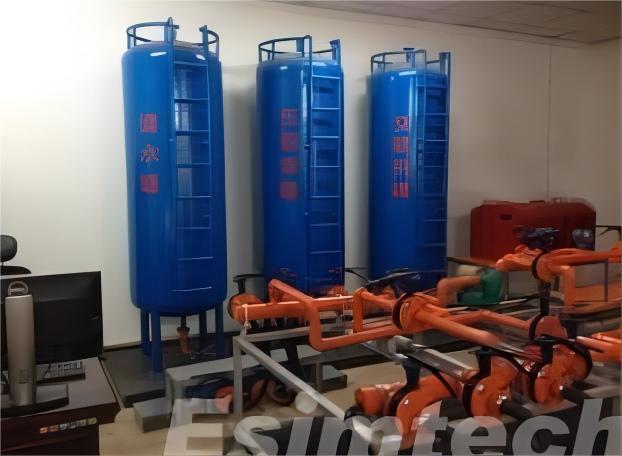What is the Role of Simulation in Oilfield Acid Job?
الجسم
Within the intricate realm of oil and gas reservoir engineering, specific methodologies are utilized to refine production methods and improve resource retrieval. Among these methodologies lies the oilfield acid job, a pivotal procedure that employs acids to invigorate the wellbore and reservoir rock. In more recent times, the incorporation of cutting-edge simulators has completely transformed the approach to planning, executing, and assessing oilfield acid jobs. This piece delves into the essence of oilfield acid jobs, underscores the importance of simulators in this progression, and illuminates the benefits they bestow upon the industry.
The Essence of Oilfield Acid Job
Referred to as acidizing, an oilfield acid job represents a well stimulation method meticulously crafted to amplify the permeability of reservoir rock, thus augmenting the passage of hydrocarbons from the reservoir to the wellbore.
As time progresses, reservoirs tend to accumulate a medley of substances including mineral sediments, drilling fluids, and indigenous materials. These accumulations impede the smooth movement of oil or gas, ultimately leading to diminished production rates. The process of acidizing encompasses the injection of acid solutions into the wellbore. This action serves to dissolve these obstructions and form conduits within the rock, facilitating the unhindered flow of hydrocarbons.
The Oilfield Acidizing Process
The oilfield acidizing process typically involves several key steps:
- Well Evaluation: Engineers evaluate the well's history, production data, and reservoir characteristics to determine whether acidizing is a suitable intervention.
- Fluid Selection: Based on the reservoir's composition, well conditions, and objectives, engineers select the appropriate acid type and concentration.
- Injection: Acid solutions are injected into the well at high pressure. The acid reacts with the reservoir rock, dissolving the deposits and creating channels.
- Flushing and Cleanup: After the acid treatment, fluids are circulated to remove the dissolved materials and residues from the wellbore.
- Post-Job Evaluation: The well's performance is monitored to assess the effectiveness of the acid job and determine whether additional treatments are necessary.

Role of Simulation in Oilfield Acid Jobs
In recent years, the integration of simulators has transformed the way oilfield acid jobs are approached:
- Design and Optimization: Simulation software allows engineers to create virtual models of the reservoir, well, and acid treatment. By inputting geological and operational data, simulators can predict the acid's behavior, its interaction with the reservoir rock, and the resulting changes in permeability. Engineers can then optimize treatment parameters for maximum efficiency.
- Risk Assessment: Simulators enable engineers to assess potential risks and challenges before the acid job is executed. For example, they can predict the acid's behavior in various rock formations, minimizing the risk of unintended side effects such as excessive dissolution or reservoir damage.
- Real-time Decision Making: During the acid job, simulators can provide real-time insights based on actual downhole data. This allows engineers to make informed decisions and adjust treatment parameters if unexpected conditions arise.
- Post-Job Analysis: Simulators play a crucial role in evaluating the success of the acid job. By comparing simulation predictions with actual results, engineers can refine their models, improve accuracy, and enhance future treatment designs.
Advantages of Simulation Technology
The use of simulators in oilfield acid jobs offers several advantages:
- Cost Savings: Simulators help optimize treatment designs, reducing the need for trial-and-error approaches. This leads to cost savings by minimizing unnecessary acid usage and equipment downtime.
- Efficiency: Simulators allow engineers to test multiple scenarios in a virtual environment before implementing them in the field. This streamlines the decision-making process and increases operational efficiency.
- Enhanced Safety: By predicting potential risks and complications, simulators contribute to safer operations and reduce the likelihood of accidents.
- Informed Decisions: Simulators provide valuable insights that enable engineers to make informed decisions throughout the acidizing process, from design to evaluation.
Conclusion
Vital methods within the oil and gas domain and oilfield acid jobs serve as crucial tools for elevating well productivity through the enhancement of reservoir permeability. The infusion of simulators has ushered in a transformative shift in how these procedures are strategized and enacted. By enabling engineers to meticulously blueprint, simulate, and assess acid jobs, simulators enhance precision, streamline processes, and bolster safety protocols.
As the oil and gas sector advances, the significance of simulators in fine-tuning oilfield acid jobs will continue to be instrumental in attaining effective well stimulation and optimizing the retrieval of hydrocarbons.














تعليقات